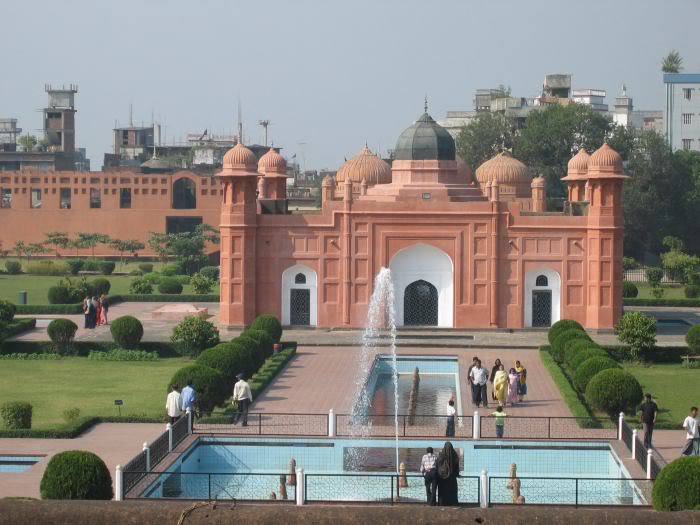Lalbagh Fort, an architectural masterpiece nestled in the heart of Dhaka, Bangladesh, stands as a vivid testament to the region’s Mughal heritage. Its intricate design, fascinating history, and cultural significance make it one of the most emblematic landmarks of the country. Often referred to as LalbaghKella in Bengali, this iconic fort is not just a relic of history but a portal that transports visitors to an era of opulence, architecture, and mysteries.
This guide dives deep into the history of Lalbagh, its architectural gems, and its significance in the tapestry of Bangladesh’s heritage. Whether you’re seeking travel guidance, historical insights, or a practical breakdown of Lalbagh Kella’s schedule, this comprehensive guide will walk you through it all!
The History of Lalbagh Fort
The Beginning of Fort
The story of Lalbagh began in 1678 when Prince Muhammad Azam Shah, the third son of Mughal Emperor Aurangzeb and a future emperor himself, initiated its construction. During his vice-regal responsibilities in Bengal, Prince Muhammad Azam envisioned the fort as more than just a military structure. Originally referred to as “Fort Aurangabad,” it was meant to symbolize the grandeur of the Mughal Empire in Bengal.
However, the project took an unexpected turn when Prince Muhammad Azam was summoned back to assist his father in critical military affairs, leaving the fort in its unfinished state.

Shaista Khan and the Halt in Construction
Shaista Khan, the succeeding Subahdar (governor) of Bengal, inherited the responsibility of completing Fort. But tragedy struck with the untimely death of his beloved daughter, Pari Bibi (Iran Dukht). It is believed that Shaista Khan, overcome by grief, deemed the fort to be an ill omen and consequently halted its construction indefinitely.
From Neglect to Rediscovery
Following the Mughal decline and the capital’s relocation from Dhaka to Murshidabad, Lalbagh remained abandoned for a significant time. Over the 19th century, its architectural significance began to gain recognition. It eventually emerged as a historical landmark under the name “Lalbagh,” replacing its former title, Fort Aurangabad.
Today, Lalbagh represents the Mughal legacy in Bengal and draws historians, architects, and travelers from around the globe.
Architecture
One of the most striking features of Lalbagh is its sophisticated design and Mughal architectural elements. Each structure within the complex reflects the craftsmanship and cultural priorities of the Mughal era.
Key Structures
1. The Mosque
The mosque within Lalbagh Fort features three domes and adopts an oblong architectural plan. Despite its modest size, it was designed as a centerpiece of spirituality and serenity. A water tank for ablutions is located right in front of the mosque, further showcasing the Mughal emphasis on function and aesthetics.
2. Tomb of Pari Bibi
At the heart of the fort lies the Tomb of Pari Bibi, one of the most iconic structures. The interior of this tomb, crafted from pure white marble, houses the remains of Pari Bibi. The central octagonal room is encased with a brass plate, creating a peaceful resting place. This tomb remains the most sentimental and revered part of the fort, symbolizing the father’s love toward his daughter.
3. Diwan-i-Aam (Governor’s Residence)
The Diwan-i-Aam, also known as the Hall of Audience, was the residence of the Mughal governor of Bengal. Attached to it is the Hammamkhana, a bathhouse used by royalty. Archaeological discoveries reveal that heating arrangements for hot water were ingeniously integrated into the Hammamkhana.
4. Bastions and Passageways
The fortification walls, bastions, tunnels, and water channels of Lalbagh reveal the strategic design behind imposing Mughal forts. The passages, some of which remain sealed today, are steeped in mystery and folklore.
Mughal Gardens and Waterworks
The fort is surrounded by sprawling Mughal-style gardens, complete with fountains and water channels. These spaces were not only a treat to the senses but also a mark of the Mughal emphasis on landscape architecture. The gardens undoubtedly enhance the charm and tranquility of Lalbagh.
Nawab Shaista Khan Left without completing his vision
Nawab Shaista Khan, a prominent Mughal subahdar of Bengal, left a lasting legacy through his architectural and administrative contributions. One of the most notable projects under his patronage was the development of a grand residence in Dhaka. However, this ambitious construction remained incomplete when he was called back to the Mughal court due to administrative changes. Despite this, the structure’s design reflects the opulence and vision characteristic of Shaista Khan’s era.
The southwestern part of the residence accommodated a beautiful roof garden, showcasing intricate landscaping techniques. This garden was thoughtfully designed with arrangements for fountains and a water reservoir, providing an exquisite setting that emphasized luxury and functionality. Such features were not only aesthetic but also practical, as they offered cooling effects during the region’s warm climate.
When Shaista Khan left Dhaka, his influence on the city endured, as he had significantly contributed to its cultural and architectural development. His tenure is often remembered as a golden era, influencing the region’s history. While some of his projects were not fully realized, the remnants stand as a testament to the grandeur of Mughal architecture and the strategic importance of Bengal under his governance.
Today
Lalbagh Fort serves as a major tourist destination in Dhaka and a significant cultural heritage site. Visitors can explore the stunning architectural elements, hear tales of its history, and immerse themselves in the Mughal-era ambiance.
Ticket Price and Accessibility
- Ticket price: The entry fee is relatively affordable for both local and international visitors.
- Online ticket price: Tickets can be purchased online, saving you time at the entrance. Check reliable travel websites or government tourism platforms for real-time ticket updates.
- Weekly off day: The fort is closed every Sunday, so plan your visit accordingly.
- Opening time: Typically, it opens at 9 AM and closes at 5 PM, but schedules may vary depending on weather and national holidays.
- Schedule: Before visiting, be sure to check the official website or local tourism boards for the latest updates.
Preserving History and Legacy
Today, restoration projects partially funded by the Ambassadors Fund for Cultural Preservation aim to maintain the fort’s grandeur. This includes efforts in repairing walls, stabilizing foundations, and enhancing informational guides for tourists.
Fascinating Myths and Stories
Lalbagh Fort is shrouded in several legends. The most intriguing tales surround its mysterious underground tunnels and the concept of the fort being unlucky following the tragic demise of Pari Bibi.
A famous myth also narrates that British soldiers sent an elephant into one of the fort’s tunnels to investigate its incredible depth, but the elephant never returned.
Plan Your Visit
Here’s why you should make sure Lalbagh is on your travel itinerary:
- Immerse Yourself in History. Witness Mughal glory packed into one spectacular location.
- Photography Opportunities. Capture breathtaking shots of intricate architecture and gardens.
- Escape City Hustle. Enjoy a tranquil experience surrounded by centuries-old Mughal craftsmanship.
The Lalbagh in Dhaka is rich in architectural marvels, each telling a story of its Mughal heritage. Among its many features, the huge bastion in the southwestern corner stands as a striking element of defense that once protected the fort and ensured its prominence. Adjacent to this is the administration block, an integral part of the fort’s functioning, which in its western section housed a mesmerizing roof garden. This garden was not merely ornamental—it boasted arrangements for fountains and a water reservoir, adding a touch of elegance and innovation to Mughal architecture.
Constructed in 1678 AD under the direction of Prince Muhammad Azam, the talented son of Emperor Aurangzeb, Fort was intended to symbolize Mughal dominance in Bengal. The tomb of Bibi Pari, a central attraction, is a marvel of artistic craftsmanship and remains a poignant reminder of the era’s sophistication. Additionally, the south gates and the corner room add to the structured layout of the fort, showcasing the functional yet aesthetic priorities of its creators. Although incomplete due to unforeseen circumstances, the fort continues to awe visitors with its historical and architectural significance, radiating the splendor of 17th-century Mughal innovation.
Looking to explore more about the architectural wonders of Lalbagh Fort, Dhaka? Start planning your visit today to witness the magnificence of Lalbagh Kella in person! For more tips, check the fort’s open and close times and book your tickets online for a hassle-free experience.




